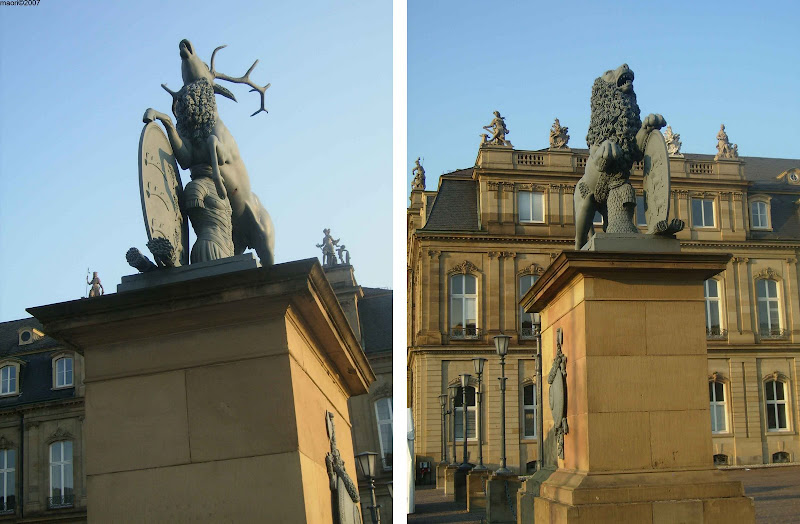1. Rathaus
5 & 6. Freiburg's Munster, a gothic Minster Cathedral constructed of red sandstone, built between 1200 and 1530. Noted for its towering spire.
 |
After Freiburg, we headed towards Stuttgart to return our rental car and catch the overnight train to Paris. Enroute we made an detour to the Black Forest. We drove part of the Schwarzwald Hochstrasse (Black Forest High Road) from Baden Baden to Mummelsee. The road skirts the rim of the hills and mountains and runs through magnificent scenery. But I did not manage to capture any good photos and so shall not show any photos of the Black Forest here. We reached Stuttgart in the late afternoon, took a walk around town and had dinner before boarding the overnight train to Paris.
1. The Schlossplatz and Neues Schloss (New Palance) of Stuttgart. The Schlossplatz is the heart of the city and a popular meeting place. The Jubilee Column at the center of the Schlossplatz was donated in 1841 on the occasion of the Silver Jubilee of the government of King Wihelm I and is topped by the goddess Concordia. The New Palance is the former residence of the kings of Wurttemberg and now houses ministries and official rooms of the State Government.
2. Sculptures at the entrance of Neues Schloss.
 |
3. Schillerplatz. In the middle of this square stands the Schiller Memorial. Between 1773 and 1780, the novelist and dramatist Friedrich Schiller was a pupil at the Hohe Karlsschule in Stuttgart. Behind the sculpture is the Fruchtkasten, the late gothic stone house featuring a Renaissance facade designed by Heinrich Schickhardt. This former warehouse for wine and corn is now a museum.
4. Alte Kanzlei (Old Chancellery) - formerly a administrative building.
No comments:
Post a Comment